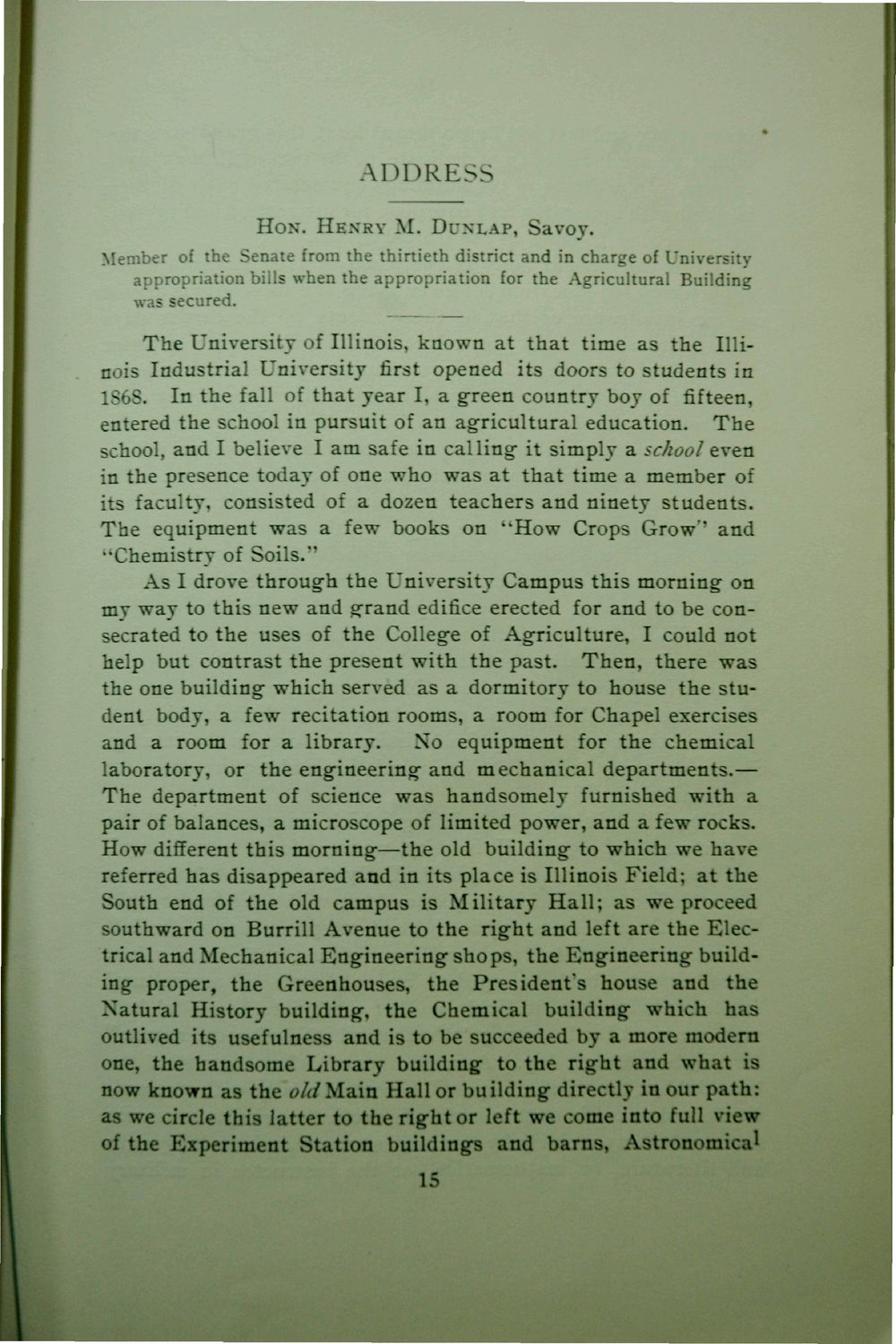| |
| |
Caption: Dedication - Ag Building
This is a reduced-resolution page image for fast online browsing.

EXTRACTED TEXT FROM PAGE:
ADDRESS HON. HENRY M. DUNLAP, Savoy. Member of the Senate from the thirtieth district and in charge of University appropriation bills when the appropriation for the Agricultural Building was secured. The University of Illinois, known at that time as the Illinois Industrial University first opened its doors to students in 1S68. In the fall of that year I, a green country boy of fifteen, entered the school in pursuit of an agricultural education. The school, and I believe I am safe in calling* it simply a school even in the presence today of one who was at that time a member of its faculty, consisted of a dozen teachers and ninety students. The equipment was a few books on "How Crops Grow'* and "Chemistry of Soils." As I drove through the University Campus this morning on my way to this new and grand edifice erected for and to be consecrated to the uses of the College of Agriculture, I could not help but contrast the present with the past. Then, there was the one building* which served as a dormitory to house the student body, a few recitation rooms, a room for Chapel exercises and a room for a library. No equipment for the chemical laboratory, or the engineering* and mechanical departments.— The department of science was handsomely furnished with a pair of balances, a microscope of limited power, and a few rocks. How different this morning—the old building to which we have referred has disappeared and in its place is Illinois Field; at the South end of the old campus is Military Hall; as we proceed southward on Burrill Avenue to the right and left are the Electrical and Mechanical Engineering shops, the Engineering building proper, the Greenhouses, the President's house and the Natural History building, the Chemical building which has outlived its usefulness and is to be succeeded by a more modern one, the handsome Library building to the right and what is now known as the ohi Main Hall or building directly in our path: as we circle this latter to the right or left we come into full view of the Experiment Station buildings and barns, Astronomical 15
| |